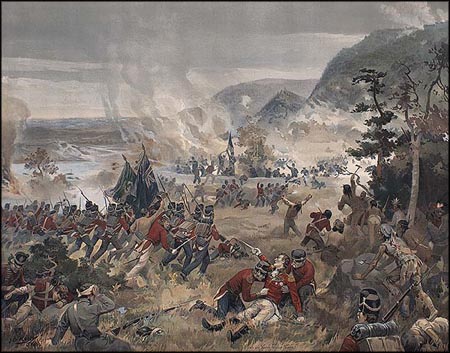The War of 1812: Notes on Students' Ideas
5 December 2012 - 3:02pm
 What should students know and do with the War of 1812?
What should students know and do with the War of 1812?
Canadian students spend considerable time learning about history. By the time they graduate from high school they have learned about the Roman Empire, the coureurs des bois, medieval societies, feminism, the Holocaust, the Charter of Rights and Freedoms, September 11 terrorism and, of course, the War of 1812. Their courses also make explicit references to notions of “historical thinking,” “literacy,” and “inquiry”. But, as in many jurisdictions, current history programs in the province of Ontario do not necessarily develop in any progressive way beyond the mere chronological accumulation of facts. The result is that students have no structured opportunity to develop their abilities to think critically about history, at least not in the way curriculum guidelines are designed.
For a number of years now, some Canadians and international scholars and educators have been paying attention to this issue of progression in historical learning. A number of studies have documented novice-expert engagement with the past. They have highlighted the fundamental differences in how historians and students conceptualize the discipline and “do history”. They have provided the scholarly community with a more robust framework of what expertise in history looks like as well as some targets for what might be accomplished in class. “The differences in each group’s approach,” Wineburg (2001) discovered, “can be traced to sweeping beliefs about historical inquiry, or what might be called an epistemology of text” (p. 76). What makes historians experts, then, is not only or not so much their vast content knowledge but their “historical literacy”, that is their ability to read, write, and think critically about the past (Lévesque, 2010). Once we start thinking in terms of historical literacy, we can more precisely and accurately (1) measure students’ preconceived ideas about history and (2) find ways of gradually extending these ideas and make them more sophisticated.
As a way to assess students' historical ideas, we designed a web-based activity on the War of 1812: The Battle of Queenston Heights. A class of students (n=29) enrolled in a senior history elective (Grade 12) in one large southern Ontario school were provided with a brief synopsis of the task, the battle of Queenston Heights on the Niagara River, and spent three additional classes completing the activity individually in a computer lab. Using a primary source account of the battle from a Canadian militia officer (Archibald McLean), a historical map of the Niagara region, and a web simulation (www.virtualhistorian.ca), students had to recreate a visual representation of the battle based on a famous British painting produced by T. Sutherland in England in 1836. Then, they had to compare/contrast their recreation with the painting of 1836.
What we found is both fascinating and troubling. Most students produced very engaging and visually stimulating representations of the battle. Their abilities to use the sources and manipulate the various learning objects were remarkable. Yet, despite 12 years of formal schooling, the majority of students had problems understanding the nature of history in general, and the necessity of reading sources as historical "evidence" in particular. Progression in disciplinary understanding is, therefore, not entirely an age-related factor. Students do not automatically get smarter in their thinking as they get older. At the Grade 12 age level, students’ ideas about history fluctuate considerably with some students holding pragmatic and realistic understandings of history while other have developed more powerful and sophisticated ideas about the past. This suggests that the complex literacy practices required for creating a personal, usable history for 21st century democracy have to be developed regularly and progressively. Simply designing more history courses or additing content to an already-crowded curriculum will not do. Our schools need to do a better job in helping students developing their historical thinking and literacy.
How do you work to encourage historical thinking and literacy in your classroom/museum?
To access the complete article on this study, visit the OHASSTA professional journal RAPPORT (November 2012)
Stéphane Lévesque, UOttawa
References:
Lévesque, S. (Winter 2010). On historical literacy: Learning to think like historians. Canadian Issues: 42-46.
Wineburg, S. (2001). Historical thinking and other unnatural acts: Charting the future of teaching the past. Philadelphia: Temple University Press.
Photo: "Battle of Queenston Heights, 1813" painted by John David Kelly in 1896. Public Domain.
- Se connecter ou créer un compte pour soumettre des commentaires

